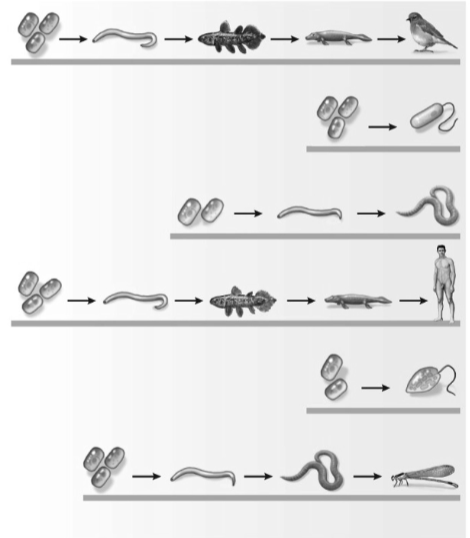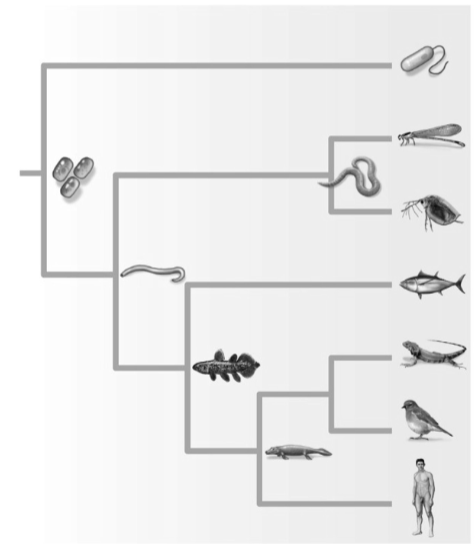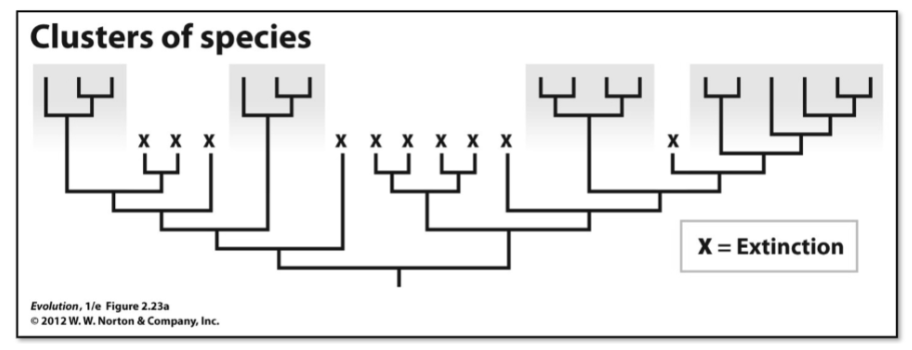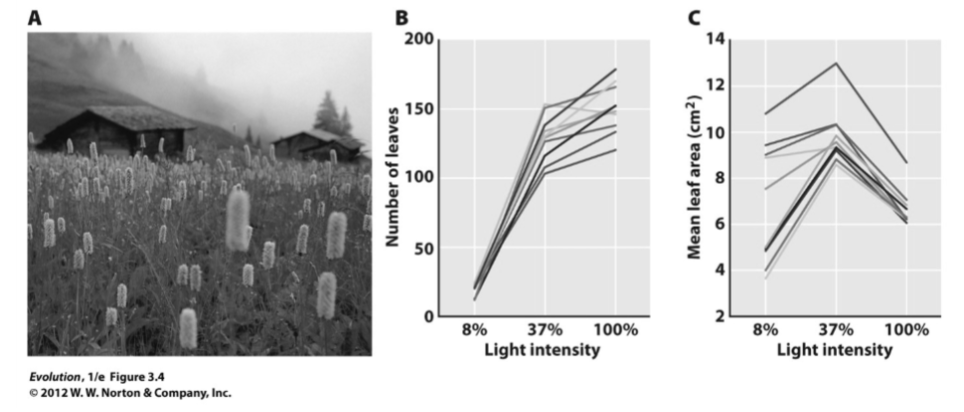Lecture 2 Pattern of Evolution
1/19
There's no tags or description
Looks like no tags are added yet.
Name | Mastery | Learn | Test | Matching | Spaced |
|---|
No study sessions yet.
20 Terms
Lamark’s pattern of evolution
independent progression

Darwin’s pattern of evolution
branching tree of life

how does direct observation show descent with modification?
example: soapberry bug changed beak length after introduction of different tree in Florida
before 1925, bugs lived on native hosts, the balloon vine
from 1926 to 1950, people grew flat-podded golden rain tree
after introduction of new tree, there was a decline in beak length
vestigial traits
traits that have no known current function but that appear to have had a function in the evolutionary past (i.e., functional in related species)
how do you look at vestigial traits to examine descent of modification?
can use vestigial traits to compare across species and look at evolutionary relationships
How did Georges Cuvier ended the controversy of extinction? (fact of extinction)
his description of Irish elk fossils ended the controversy because he argued that, if the elk is so big, it’s hard to believe we would have missed it — previously people just thought what if we just can’t find it
law of succession
fossil and extant (existing) organisms living in one geographical region are related to each other and different from organisms found in other areas

transitional forms
descent with modification predicts the existence of transitional forms that show a mix of features found in ancestral populations and novel traits found in their descendants
example: Tiktaalik — representative of transition between fish and tetrapodsThese forms provide evidence of evolution by illustrating how species evolve over time, showing gradual changes through the fossil record.
homologous traits
a trait shared by two or more species because those species have inherited the trait from a shared common ancestor
structural and developmental homology
structural similarity between species sometimes despite differences in function
underlying design similar, function is not (grasping, digging, running, swimming, flying)
analogous structures
structures that have shared function but does not share ancestry
example: shark and orca have similar streamlined shapes, powerful tails, and short fins or flippers but do not have same ancestry — shark is fish and orca is mammal
how are similar species spaced geographically?
similar species tend to be clustered geographically, suggesting that they descended from a common ancestor
what kinds of evidence support the idea that evolution is descent with modification?
observations of change through time (living species and fossils)
homologous structures/traits
geographic patterns of related species
describe the three necessary conditions for evolution by natural selection
variation — members of population vary in the traits they display
inheritance — offspring tend to resemble their parents; they inherit their parent’s variation
differential reproductive success — not all individuals that are born survive to reproduce because survival is not random; individuals with particular traits are more likely to survive
what is the primary source of variation?
mutations
mutations
random with respect to the needs of the organism
pop up randomly — most of the time are deleterious or harmful, sometimes benficial
mutations are not a response to the needs of the individual or population
at what level does natural selection act on? at what level is it studied on?
natural selection acts on phenotypes (because that’s how we understand interaction between genotype and environment) and studied at the level of a trait or suit of traits
norm of reaction
a curve that represents the phenotype expressed by a given genotype as a function of environmental conditions

How does Darwin’s finches help us study evolution by natural selection? (hint: use the three postulates)
variation
all recorded traits (weight, wing length, tail length, beak width/depth/length) were found to be variable
variation is heritable
shared environment could have caused correlation
misidentified paternity could also confound results
genetic analyses found that 65% of the variation among finches in beak depth appears to be due to genetic differences
varying survival and reproduction rate
drought in 1977 led to finch population declining due to decline in seed availability
average survivor had deeper beak than the average non-survivor — more birds with larger beaks survived adn left offspring (also with larger beaks)
more offspring are produced than survive to breed
fitness
a measure of reproductive success relative to the average reproductive success of the population